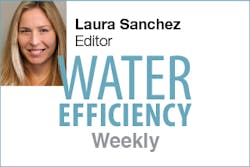Soluble Solutions: Reinvestment in America’s Water Infrastructure
One of the most impactful shifts during the era of 1870–1920 was the transformation of the American home as it became connected by electricity and plumbing. Energy and water revolutionized the domestic landscape, improved the healthfulness of our society, and forever changed the world that we live in.
A recent New York Times article titled “What Was the Greatest Era for Innovation? A Brief Guided Tour,” shares what many might consider a timeline of our nation’s infrastructure. It spotlights the fundamental importance of water infrastructure.
“Urban water networks supplied clean water, and sewer systems removed waste without the pungent odors of chamber pots and outhouses,” the article states. “This is thought to be a major reason public health and life expectancy improved in the years leading to 1920. Many of the major advances in medical treatment, like antibiotics, were yet to arrive, but clean water and waste removal—chlorination and filtration were introduced—cut back the death rate from typhoid fever by a factor of five from 1900 to 1920.”
And yet this valuable infrastructural element is decrepit. As America’s population has increased, the nation’s plumbing system has expanded in piece-meal increments. Today in many parts of the country, the original 1800s distribution systems and service lines are still in use but badly deteriorated. There are currently 7.3 million lead services lines still in use.
The American Society of Civil Engineers recently published “Failure to Act: Closing the Infrastructure Investment Gap,” an in-depth study that delineates sector-by-sector the space between the current needs for infrastructure investment against funding trends. In doing so, it reveals the direct correlation between America’s infrastructure and economic wellbeing. And it echoes with haunting clarity, the importance of improvements to urban water networks and wastewater treatment systems nationwide.
“Of all the infrastructure types, water is the most fundamental to life,” the report states. “Water and wastewater systems in the US are clearly aging, and investment is not able to keep up with the need.” The investment gap for water and wastewater through 2025 is expected to decrease from $11.3 billion to 10.5 billion, in part due to projects funded through the American Recovery and Reinvestment Act. But without significant reinvestment, the funding gap is expected to escalate to $152 billion by 2040.
Mankind not only depends on clean water for health, but all major services and industries rely upon water in some way for production. Going forward, less reliable service could mean reduced productivity, production interruptions, and an increase in product costs across the board. Reflecting this projection in numerical terms, the ASCE report indicates that shortfalls in funding will potentially cause the US to lose nearly 500,000 jobs by 2025 and the GDP would lose $508 billion. If the investment deficit is not addressed by 2040, the GDP could lose $3.2 trillion. What solutions do you see to help close the infrastructure gap?
